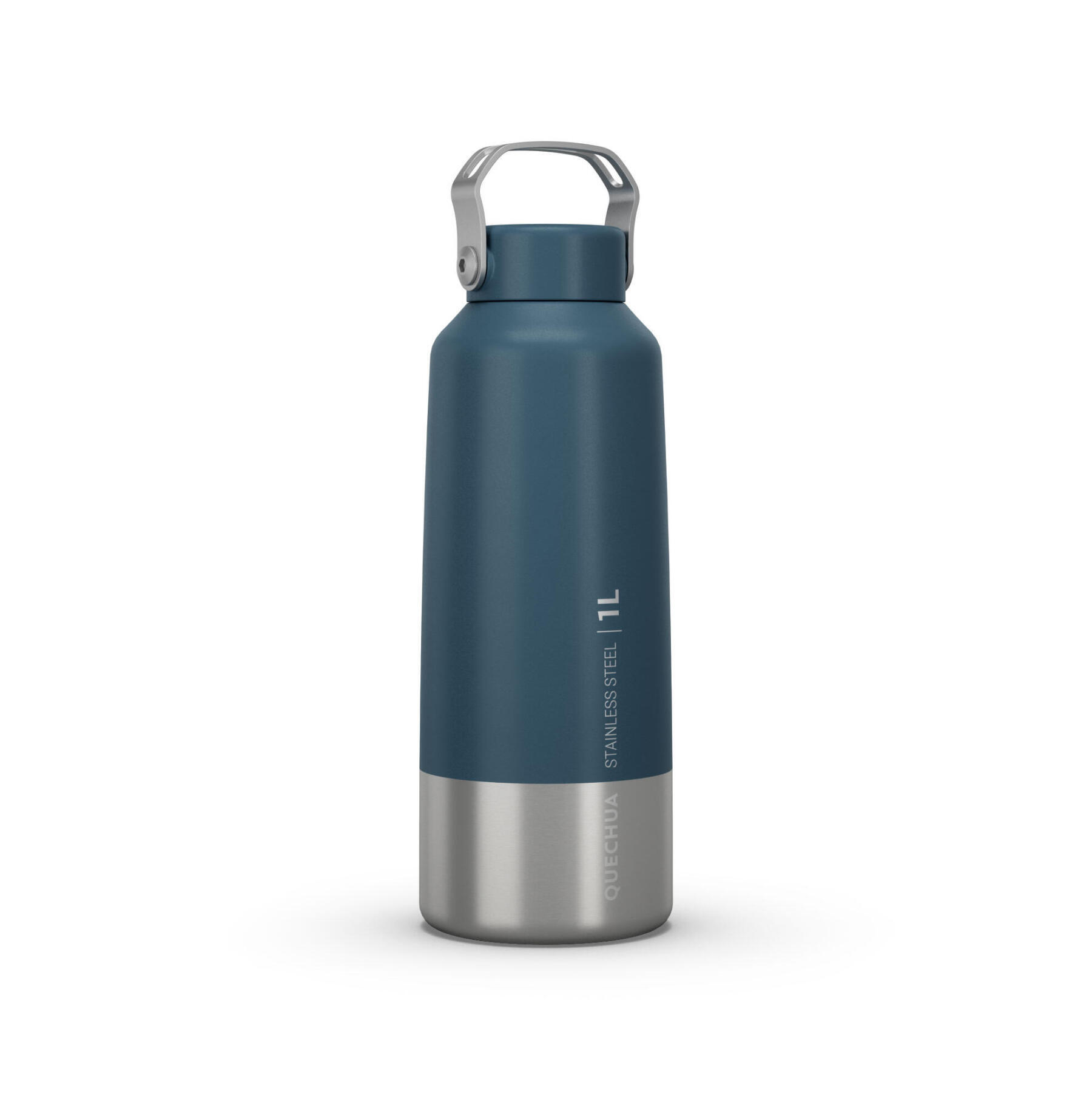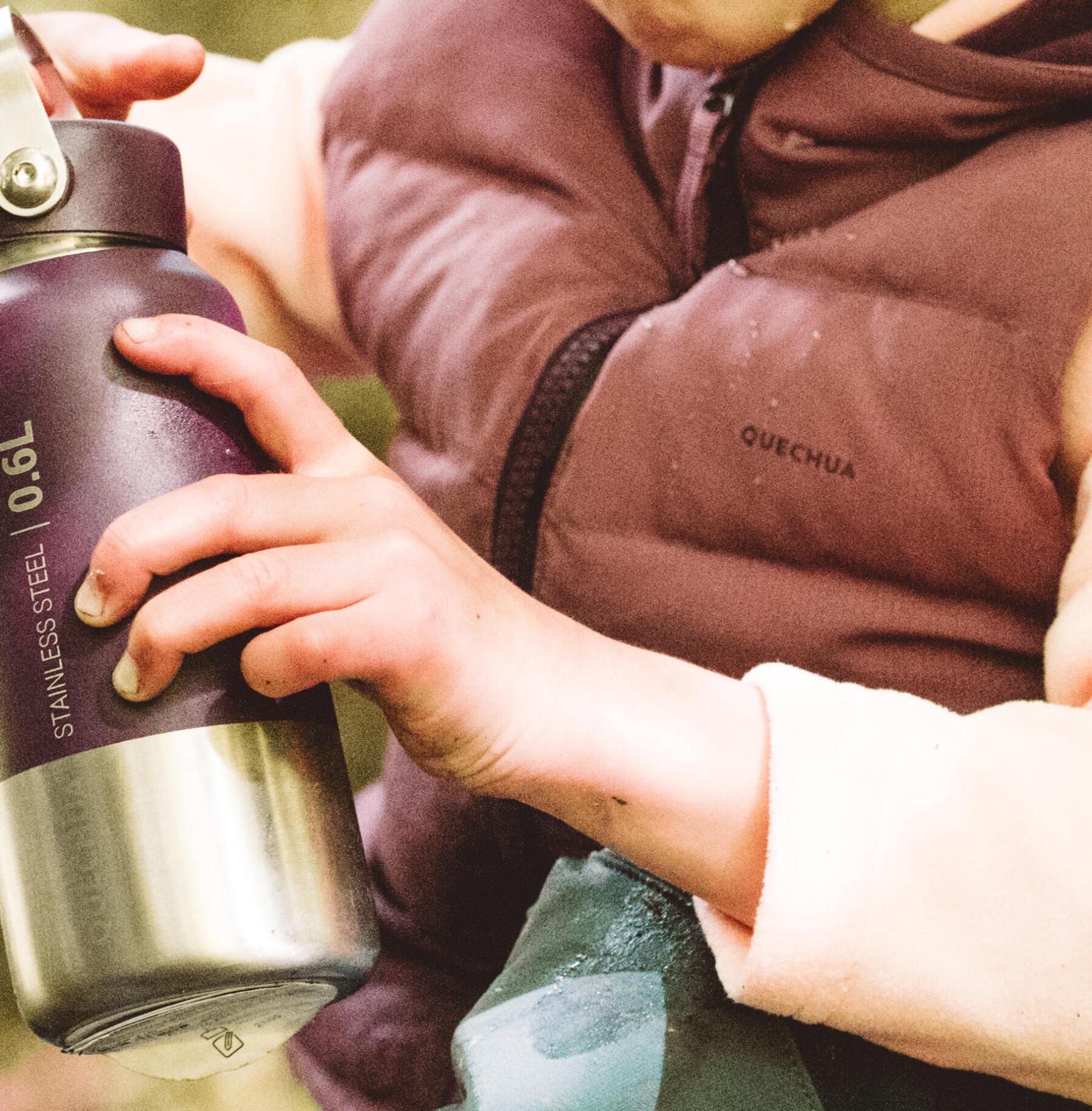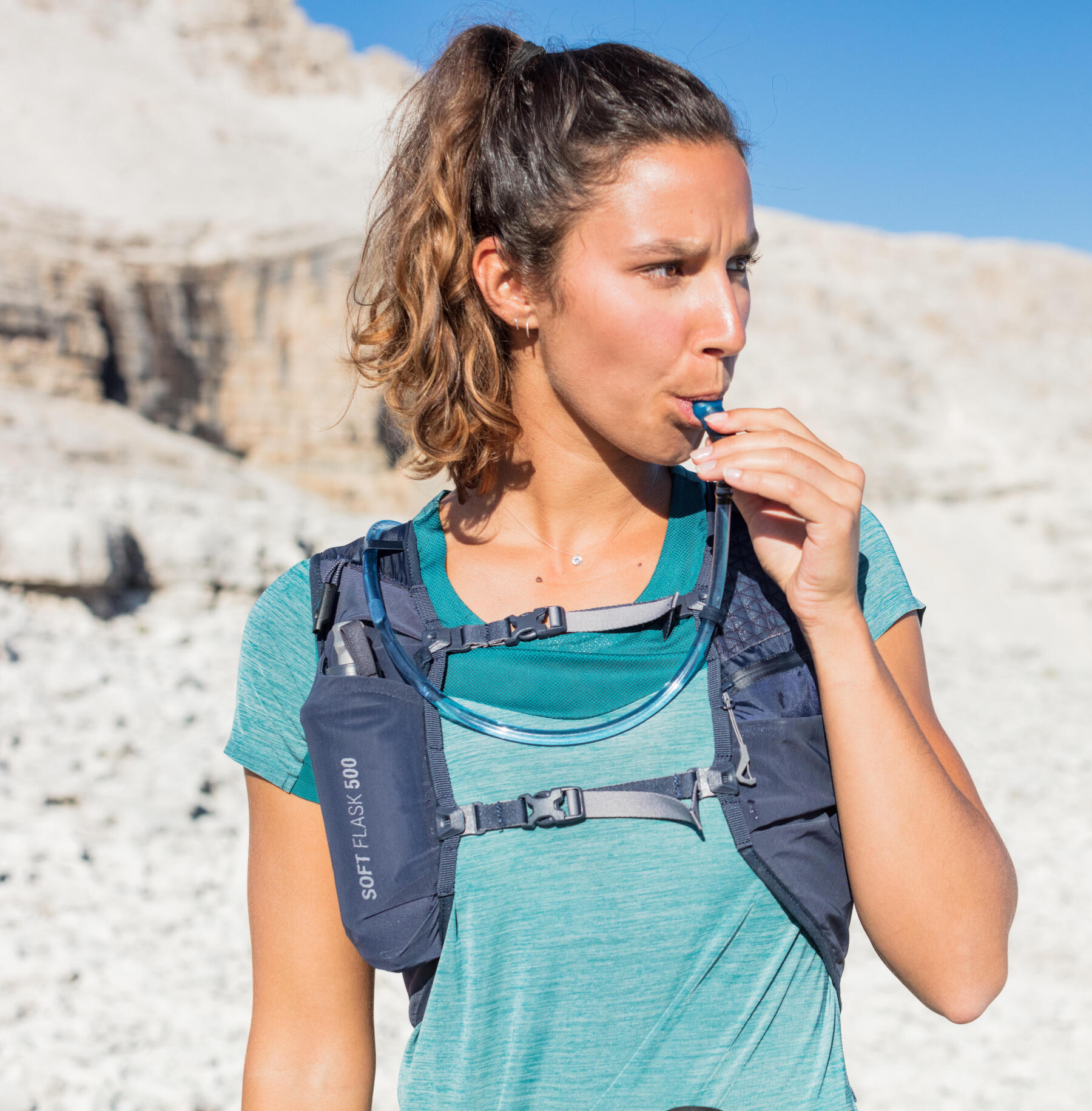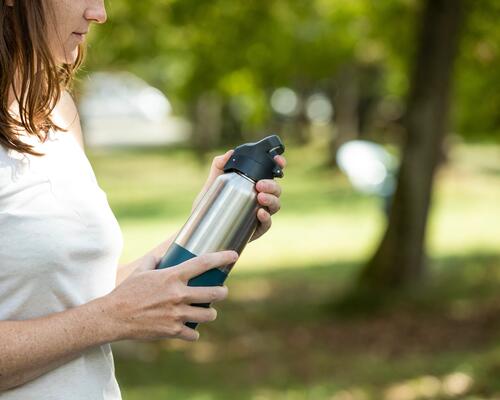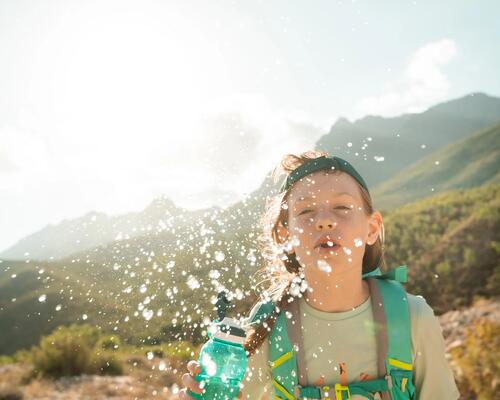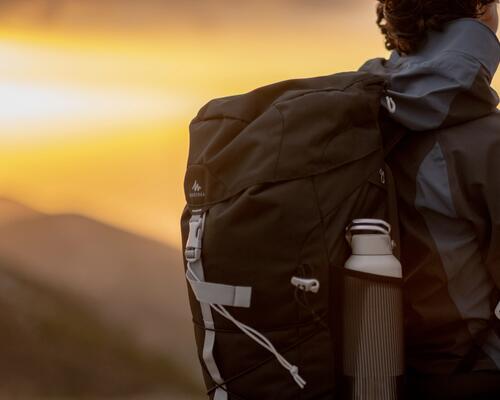I drink at least 1½ litres of water per day
An adult loses 2½ litres of water on average per day. Our body is constantly eliminating water or water vapour through the kidneys, intestines, lungs and skin.
This loss of water must be replaced by the food and drink we take in. Given that food provides about 1 L of water, drink must provide the other 1½ litres. This is where this quantity comes from and, when I talk about drink, I mean water...
Why at least 1½ litres? Your needs increase with the ambient temperature, dry atmospheres (this is the case in the mountains) and, particularly during physical activity.

